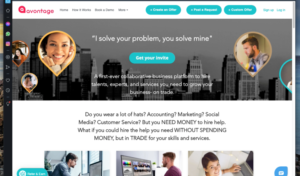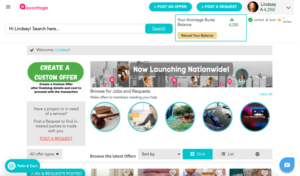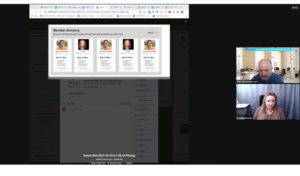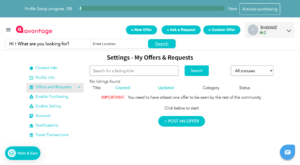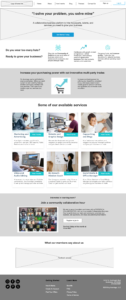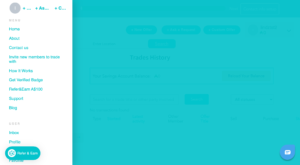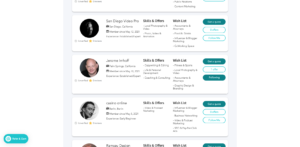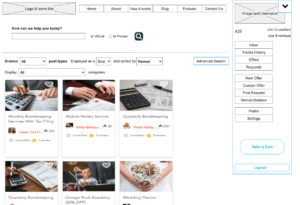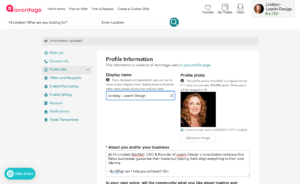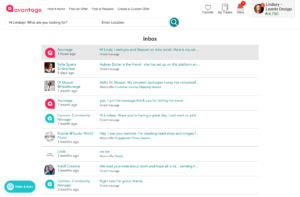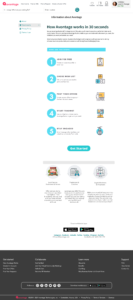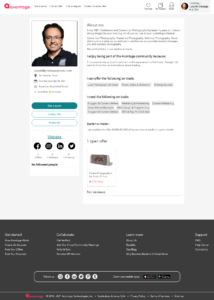Avontage, a pioneering bartering service platform, aimed to revolutionize the concept of trading services. However, the company faced several challenges in customer conversion, onboarding, and retention. I was engaged to address these issues and used a comprehensive discovery process, aligning internal stakeholders, enhancing customer understanding, and redesigning their product and onboarding processes.
Onboarding Success Rate
from
18%
to
61%
the percentage of users who successfully complete the onboarding process
Time to First Value
from
weeks
to
days
the time it takes for new users to experience their first successful interaction or transaction on the platform
Customer Satisfaction
from
-1
to
74
scores from post-interaction surveys and feedback gauging their satisfaction with the platform
Understanding
During the initial discovery sessions with the CEO and their direct reports, it became apparent that there was a lack of shared understanding about the company’s identity and value proposition (the thing a company promises to deliver or do for a customer). Plus, customer perceptions of the value proposition varied widely. Moreover, the customer needs were not integrated into the product design process, which led to misalignment between the platform’s offerings and the user expectations.
Making the immediate first step to …
Characterize the brand
To help the team understand who/what exactly the company was as a platform and as a brand. I led the executive team through some branding activities, including characterizing the brand as a character/persona.

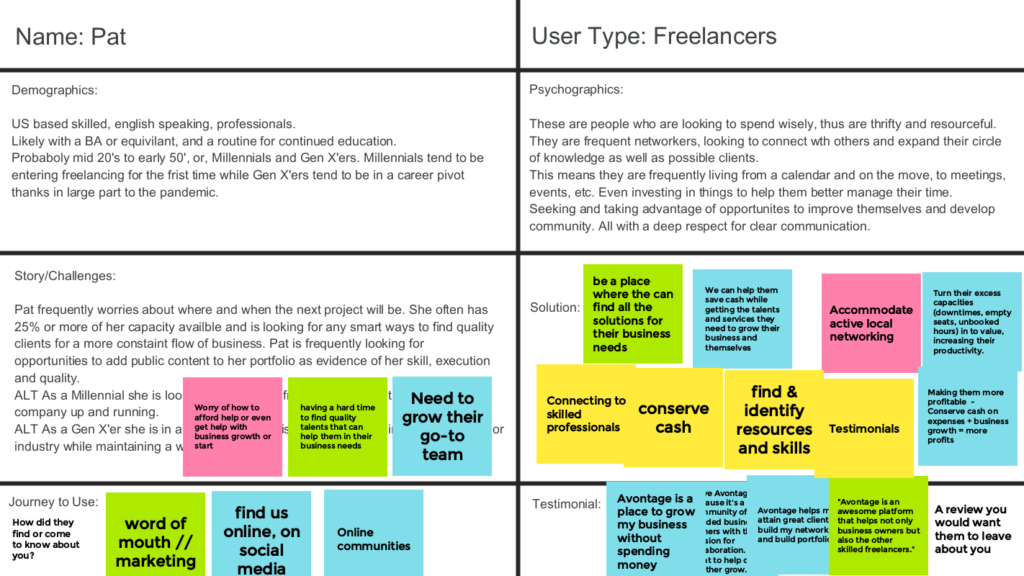
Next: Define the users/customers
To align the team on who exactly their company and platform was there to serve, I facilitated persona activities. Ultimately identifying the different types of customers and/or users that they have and target. Creating a character to represent each one as a fuller archetype for the team to relate to and consider. Whom they are, how they likely think, what devices they likely use and when, etc.
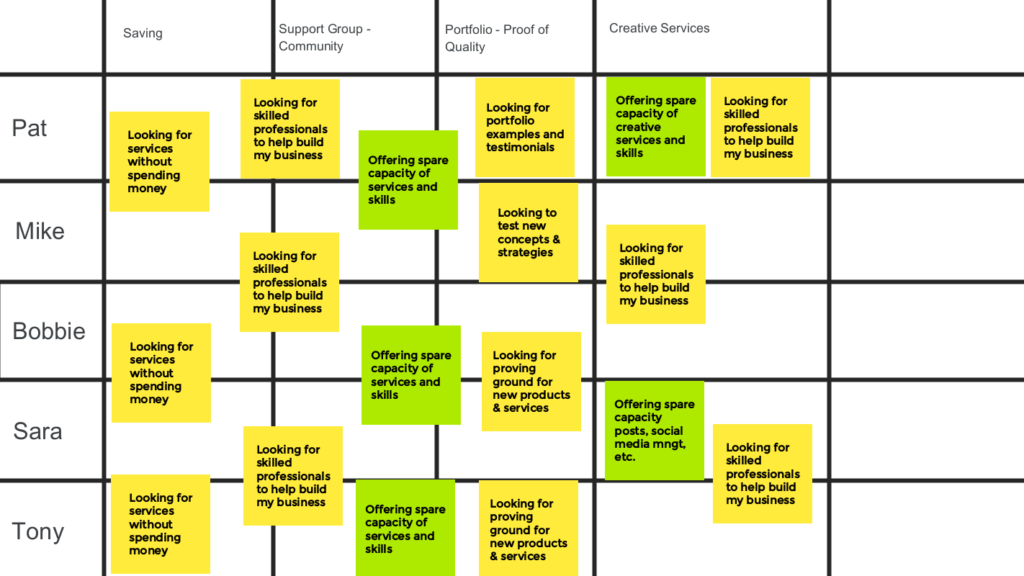
Along with their journey
Led the team through some persona alignment activities. Sorting the different types of customers and users by how they differed or not. Taking care to discuss how the problems solved for one could positively or negatively impact another.
Ultimately aligning a system flow for them in and around one another.
Building on learnings
To tackle these issues and opportunities discovered, using a multi-step approach.
Mentored
Coached the CEO and Service Lead on design tools, strategic methods and service design practices. At times holding fuller team calls to answer collective questions, advise on shaping plans and even quiz them on the overall learnings thus far.
Aligned of Definitions
Facilitated workshops to establish a clear and unified understanding of their mission, value proposition, and goals among the leadership team. This ensured that everyone within the organization conveyed a consistent message regarding who the company was and what they did.
Introduced Customer-Centric Tactics
Like so many startups, the CEO was the lead designer, developer and marketer. So I introduced the human-centered design process (a.k.a. user-centered or customer-centered) and shared when and how to apply it to the brand, user, customer and employee levels. Also sharing online resources and books to use as additional resources.
Defined Strategy & Process
I conducted an in-depth analysis of the feedback collected from customers, identifying their pain points, expectations, and suggestions. Then used this information along with other research to develop a plan to bridge the gap between customer perceptions and the company’s execution.
Creating
Light-weight testing
Developed interactive wireframes to quickly design the next iteration of the platform. Seeking feedback from users and team members to help refine and solidify ideas prior to development.
Product Design
Using insights from the discovery phases and customer feedback, we (the leadership team and I) revamped the product design and onboarding flows to create a more seamless and engaging user experience. This involved simplifying navigation, rewording content, and providing interactive onboarding tutorials.
The impact
The implementation of these strategic initiatives yielded remarkable results.
Retention Increased
The company experienced a significant increase in user retention once the platform’s offerings aligned with customer expectations along with an increase in perceived value as users were more likely to stay engaged and continue using the service.
Onboarding Success
Their onboarding success rate surged thanks to the revamped onboarding process, which now aligned with customer preferences and needs, resulted in a smoother transition for new users onto the platform.
Conclusion
Through a meticulous discovery process, strategic alignment, and customer-centric design changes, they transformed from a struggling bartering service platform into a thriving modernized marketplace. By bridging the gap between internal perceptions and external customer experiences, they not only improved its customer conversion, onboarding, and retention rates but also solidified its position as a leader in the evolving world of service bartering.
Lessons (Re)Learned
Interviewing never ends. Be it me interviewing my client, their teams, SMEs or their teams interviewing me. We are always learning more about one another thus we only get better at serving one another.
Onboarding Success Rate
increased by
43%
Time to First Value
decreased by
1.5 weeks
Customer Satisfaction
increased by
75
